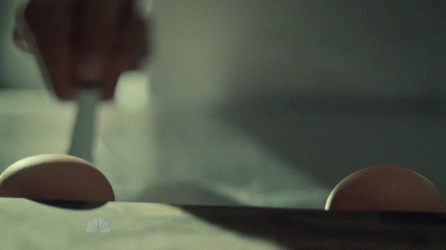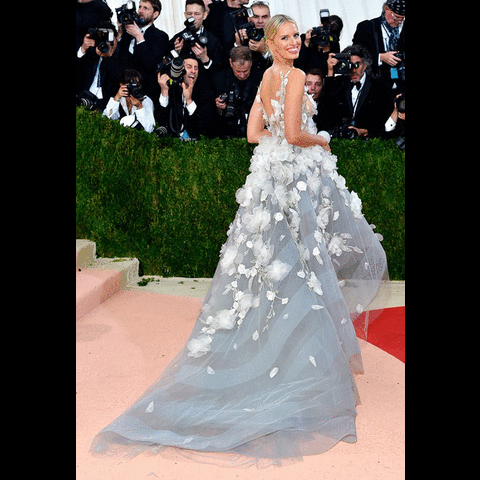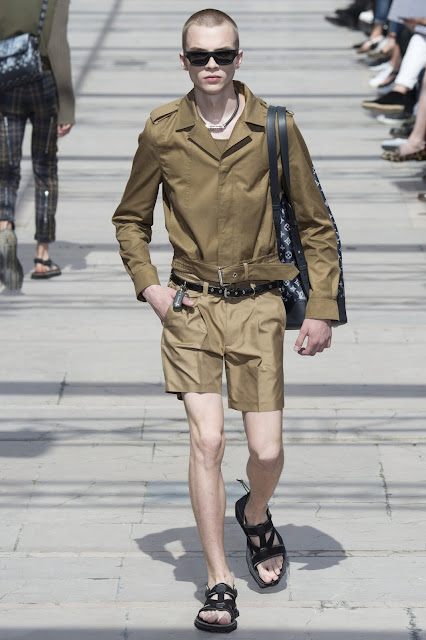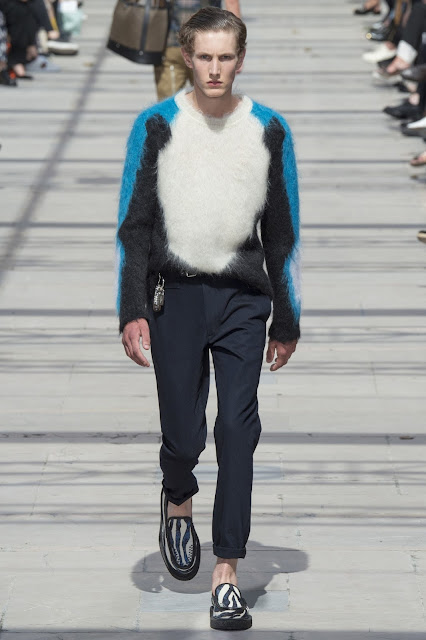
It’s official. Fashion’s obsession for Spring is travel—synonyms, indeed, are fast running out to describe the nomadic, itinerant, roving eye of designers. There’s three out of action, right there. That idea of incessant movement isn’t just a source of inspiration to Kim Jones—it’s a way of life.
He is a man gripped with wanderlust, a man who has traveled to Japan alone over 70 times in the past decade, and plenty of places besides. Keeping up with Jones is difficult work. Suitably, he’s tasked with designing the menswear for Louis Vuitton, a house whose founding raison d’être was the notion of the voyager. It’s seldom what but where next with Jones, when it comes to inspiration. The scenes make the seams.
How come, then, that for next season Jones decided not to escape, but to return? His Spring Louis Vuitton show wasn’t about travel—rather, a homecoming. In typical Jonesian fashion, that doesn’t relate to a single locale, but a trio: Africa, where he grew up; London, where he was educated; and Paris, where he lives and works now.
The latter two were the most evident: Africa, the source of luxurious exotic skins of crocodile and ostrich, Masai-inspired checks, and a savanna-bleached, sand-blind palette dominated by buff, taupe, and ecru (we’d call it beige); while London surrendered punk. “There’s always something a little London hidden somewhere,” said Jones. Actually, there was quite a lot. Jones is an avid collector of punk memorabilia—his horde of Vivienne Westwood and Malcolm McLaren’s output from their Sex and Seditionaries era is second to none, including many a museum—and he put it to good use as reference material for the collection’s bondage-buckled pants, D-rings, and dog collars, albeit superlatively finished in the French fashion. That dog collar, incidentally, was an archive Vuitton style, more commonly used for pooches, named the “Baxter.”
It was those odd, anachronistic crossovers that made this collection really zing. How about African checks approximating tartan in those skinny strapped-up trews? Or that the utility details of punk linked, for Jones, to the functional aspect of Vuitton’s history, the clips and fastenings of traditional trunks. A pinky-tan bomber in the pimply outbreak characteristic of ostrich hide was reminiscent of an old adage: Punk is like squeezing spots. Except, if these Vuitton ones were being squeezed, it would be in a spa in Champneys. Then there’s the fact trunks were referred to as “Plastic Peculiars” and the idea that, in all honesty, Vuitton’s coated canvas is a glorified (and very expensive) kind of plastic. Jones had the real stuff in this show, too, pervy rubber trenches etched with the LV monogram and printed with a menagerie of mutated animals scribbled by the designer’s friends and past collaborators Jake and Dinos Chapman.
What does coming home imply? A familiarity. While you wouldn’t want to call this a greatest hits collection, it did riff and reference on ideas Jones has explored throughout his tenure at the house. Those Chapman prints were one; the African checks another, launched at his debut five years to the season, reworked today but still recognizable. When the Chapman’s zombie zoo roamed free, it was across a Vuitton monogram inspired by the original blueprint for the design, created in 1896—the root of the monogram, just as Jones explored his own roots.
In actuality, that was the trip Jones decided to take us on this season—down memory lane, his own and that of Louis Vuitton. The bag shapes were consciously lifted from the archives—the Steamer became a backpack; a ’70s-duffel style called Randonnee got a new strap; the Valise trunks came kitted out in springbok or an electric-blue zebra. The homecoming element resulted in a show that felt, perhaps, warmer than the label’s most recent outing; certainly more personal, which is inevitable given Jones’s connection to the subjects at hand. That gave it an additional impact, to the glossy veneer of face appeal. It gave it a depth, which is especially tricky when dealing with subject matters mined so thoroughly before.
Jones’s referencing today didn’t elevate so much as recontextualize punk. It showed what rebellion could mean, at a 21st-century luxury goods house. Eyebrows will be raised—but rebellion is not the sight of the brothel-creepered, safety-pinned raiments of punk proposed as Vuitton menswear, but a designer afforded the freedom to present them. In an increasingly saturated luxury goods landscape, that is why this show stood out.





















































Comments
Post a Comment